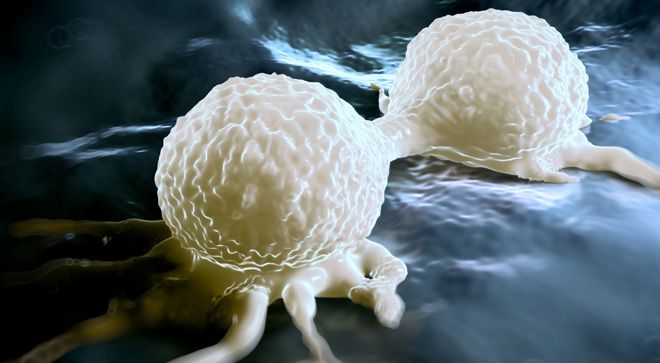Article
Antibody-Drug Conjugate Improves Responses in Metastatic Triple-Negative Breast Cancer
Author(s):
A stud presented at SABCS shows that IMMU-132, an antibody-drug conjugate, improves outcomes in women with heavily pretreated metastatic triple-negative breast cancer.
Treatment with IMMU-132 (sacituzumab govitecan) elicited an objective response rate (ORR) of 34 percent in patients with heavily pretreated metastatic triple-negative breast cancer, according to updated findings from a phase 2 study presented at the 2017 San Antonio Breast Cancer Symposium (SABCS).
In the 110-patient single-arm trial, the ORR was accompanied by stable disease (SD) for 6 months or more in 11 percent of patients, for an overall disease control rate of 45 percent. The median progression-free survival (PFS) with IMMU-132 was 5.5 months and the median overall survival (OS) was 12.7 months.
Based on the promising results and high unmet need, Immunomedics, the company developing the drug, plans to submit the data for potential accelerated approval in the first quarter of 2018. The phase 3 randomized ASCENT study is currently enrolling, and would serve as the confirmatory study for IMMU-132 in metastatic triple-negative breast cancer.
"IMMU-132 as a single-agent demonstrated significant clinical activity as third-line and beyond therapy for patients with relapsed/refractory metastatic triple-negative breast cancer," lead investigator Aditya Bardia, M.D., MPH, from the Massachusetts General Hospital, said during a presentation of the results. "The responses were durable and the data were consistent with central review."
IMMU-132 is an antibody-drug conjugate that consists of the active metabolite of irinotecan, SN-38, linked with a humanized IgG antibody targeted against TROP-2, a cell-surface glycoprotein that is expressed in more than 90% of triple-negative breast cancer. In the study, 57 patients had moderate to strong TROP-2 expression by immunohistochemistry and five had weak or absent staining for the marker. Data were not available for the remaining patients.
The study included 110 patients at a median age of 55 years. IMMU-132 was administered at 10 mg/kg on days one and eight of each 28-day cycle, which is the same dose being used in the phase 3 study. Patients had received a median of 14.5 doses of the medication and the median duration of treatment was 4.9 months.
The ECOG performance status was 0 (30%) and 1 (70%), and the median time from metastatic diagnosis to treatment in the study was 1.5 years. Forty-one percent of patients were treated in the third-line setting and 59 percent were in the fourth line or greater. The most common prior therapies were taxanes (98 percent), anthracyclines (86 percent), cyclophosphamide (85 percent), and platinum agents (75 percent). Additionally, 17 percent of patients had received an immune checkpoint inhibitor. Most patients had visceral metastases (80 percent).
By blinded independent central review, the ORR was 31 percent, which confirmed findings seen in the local assessment, Bardia said. By local assessment there were three complete responses (CRs) and 34 partial responses (PR). There were six CRs and 28 PRs in the blinded review. A target lesion reduction was seen in approximately 74 percent of patients, suggesting that most patients experienced some type of response to the medication, Bardia said.
The median duration of response by local review was 7.6 months and was 9.1 months in the blinded assessment. The median time to onset of response was two months. There were nine long-term responders who remained progression-free for more than one year from the start of treatment, with four of these individuals experiencing a response for greater than two years. Twelve patients continued treatment at the data cutoff in June 2017.
In an exploratory analysis, responses looked similar across subgroups. TROP-2 expression did not appear to impact activity; however, there were limited data for this assessment. Those receiving prior checkpoint inhibitors had an ORR of 47 percent and responses were similar between those receiving treatment as a third-line therapy or beyond (36 percent and 32 percent, respectively). In those with and without visceral metastases, the ORRs were 30 percent and 50 percent, respectively.
The most common side effects were neutropenia, nausea, diarrhea, anemia, fatigue and vomiting. "The adverse events were well-managed with supportive therapy or dose modifications," said Bardia. "Twenty-five percent of patients had a dose reduction to 7.5 mg/kg and the rest were able to continue IMMU-132 at the 10 mg/kg dose. Only two patients, or 1.8 percent, discontinued due to adverse events and there were no treatment-related deaths in this study."
The traditional response to single-agent chemotherapy beyond the first-line setting ranges from 6 percent to 17 percent across clinical trials. Additionally, the median PFS in this setting is traditionally 1.6 to 2.8 months, Bardia said.
"The response rates to standard chemotherapy are low and median progression-free survival is in the range of two or three months with standard therapy," he said. "Consequently, there is a large unmet need in the breast cancer community."
Based on this unmet need, in February 2016 the FDA granted a breakthrough therapy designation to IMMU-132 as a treatment for triple-negative breast cancer following at least two treatments for metastatic disease. Immunomedics has been engaged in communications with the FDA regarding the biologics license application for the treatment since the beginning of the year.





